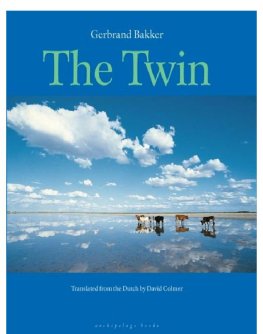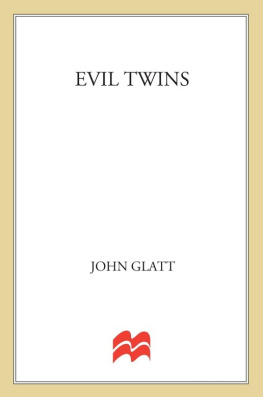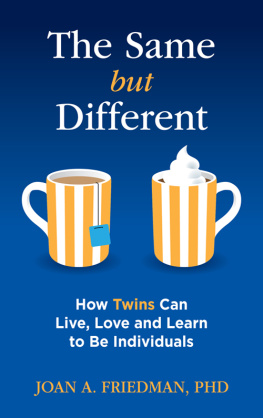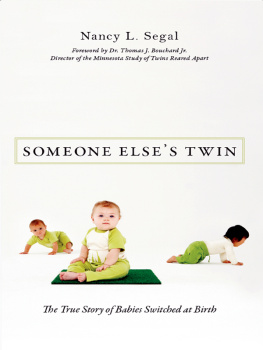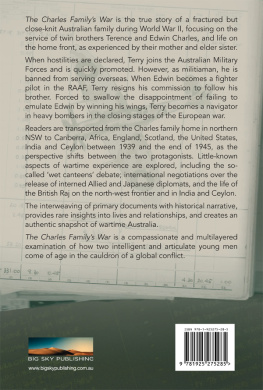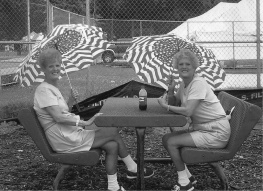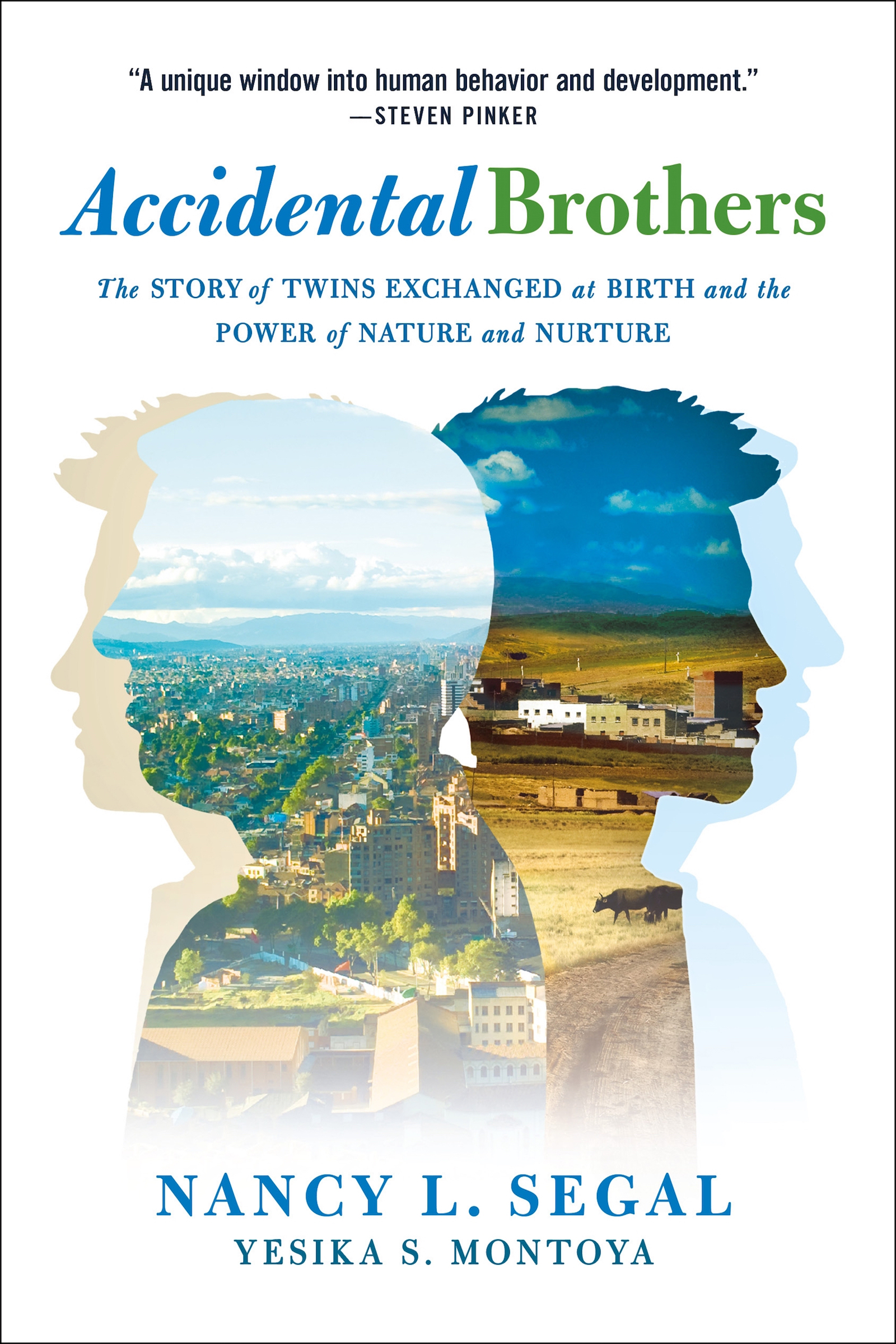Contents
Guide
Pagebreaks of the print version

In March 2017 the four brothers (from left to right), Jorge, William, Carlos, and Wilber, gathered to celebrate Carloss graduation. He received a certificate that declared him to be an especialista en ciencias tributarias (specialist in tax sciences).
Credit: Diana Carolina

The author and publisher have provided this e-book to you for your personal use only. You may not make this e-book publicly available in any way. Copyright infringement is against the law. If you believe the copy of this e-book you are reading infringes on the authors copyright, please notify the publisher at: us.macmillanusa.com/piracy.
In Memory of Irving I. Gottesman,
for insights and inspiration
NLS
To My Family and Friends,
for your love and unconditional support
YSM
There are really two kinds of life. There is the one people believe you are living, and there is the other. It is this other which causes the trouble, this other we long to see.
J. Salter, Light Years
Love and Luck
Call me a twin trackermy boyfriend does. As a researcher I cannot resist hunting down nearly all the new and interesting twin and sibling cases I encounter. The latest result is Accidental Brothers , a moment-by-moment replay of a twin-tracking adventure like no other I have had. To call it a scientific thriller is neither bold nor boastful. I did not create the events described here; I only studied them.
I have been lucky to have a career I love. As a professor of psychology I have worked on dozens of exciting research projects involving twins, triplets, unrelated look-alikes, and other curious pairings. People in the United States and around the world send me all sorts of interesting stories involving multiples, and I appreciate their kindness. I answer every query I receive: Should twins be separated in school? Do genes influence sexual preference? Are twins clones ? Are clones twins ? Then, every once in a while, a truly exceptional twin-related situation emerges from the long list of emails, so I dig deeper.
Just days after their birth, two sets of Colombian twins became unwitting subjects in an accidental study, twenty-five years in the future, because an identical twin baby from one pair was accidentally switched with an identical twin baby from another pair. The switch, probably the result of a momentary oversight, presumably by an overtaxed or inattentive nurse, created two reared-apart identical twin pairs and two unrelated sibling pairs who grew up believing they were fraternal twins. I saw their story as a rare opportunity to learn how the drastically different environments in which the separated twins were raisedbig city versus remote township; university attendance versus fifth-grade education; father absence versus father presenceaffected their abilities, outlooks, interests, and love lives. Aerial views of Bogot and Vereda El Recreo (where the country-raised twins grew up) contrast high-density urban living and closely spaced neighborhoods with vast remote stretches of rural Colombias green and brown earth. Vereda means path or sidewalk, an ironic name because Vereda El Recreo has none.
Both my colleagues who acknowledge twin study findings of genetic influence on behavior, and critics who question these findings, have been clamoring for such an extreme case of reared-apart twins, and the Bogot brothers gave us not just one but two. They also gave us a chance to see how alike two pairs of unrelated same-age siblingswhat I call virtual twinsturned out to be. The effects of genetic and environmental influences on behavior have long been a matter of debate. The special legacy of the twins in Colombia is how four young men readjusted their livestwo after trading placesand what their experience means for our understanding of human behavior and personal development.
Conception of a Career
My career in twin research began in the preemie nursery of Boston Lying-In Hospital, when I exited my mothers womb six weeks ahead of schedule and seven minutes ahead of my fraternal twin sister, Anne. At three pounds, eleven ounces, I spent my first month alone in an incubator, where wires and monitors were my only distractions, while Anne, who weighed in at four pounds, seven ounces, was healthy enough to go home after a few days. No one would call us reared-apart twins, but after working with the Bogot brothers and seven other switched-at-birth twin pairs, I think about our four-week separation more seriously now. I am grateful that I went home with the right parents and was raised with the right twin sister.
Twin research became my passion as an undergraduate student at Boston University. In my senior year I completed a psychology course project comparing the consequences of placing young twins in the same or separate classrooms when they first enter school. This was a topic to which I could relate personallya story in itselfand I enjoyed researching it and writing it more than any other paper I had written. The following year I explored other aspects of twin studies for my masters thesis at the University of Chicago. My thesis adviser applauded my work but believed that my interests would change in time. However, they have only deepened: my doctoral dissertation was about twins cooperation and competition, and I have undertaken many twin-related papers and projects since.
I am drawn to unusual cases, especially those involving twins reared apart. I like peering into the alternative universes that these separated twins naturally create. Each genetically identical twin is a fresh take on what might have beena rare glimpse of an alternate self experiencing life in a whole new way. When separated twins finally meet, they can see themselves packaged differently, keenly aware of what could have been had their families, neighborhoods, schools, and other life experiences been reversed. Brent Tremblay, an identical twin, grew up in Ottawa, Canada, not far from his genetic duplicate, George Holmes. Brents adoptive mother maintained a beautiful House and Garden style home, and while she loved her son deeply, she despaired at the constant messiness of his bedroom. She also denied his wish to have the puppy he craved. But when Brent and George finally met in their early twenties, following the unraveling of a case of confused identity, Brent found he was more comfortable in the more casual and relaxed home of Georges family. It turned out that Brent had been switched early on with an unrelated male baby who had taken his place as Georges accidental fraternal twin brother. It made sense that Brent found comfort in Georges home atmosphere, created by the couple who had given birth to him, too. Parents pass on genes as well as environments to their childrenBrent was not raised in his biological parents home, but his genetically based temperament was similar to theirs and to his twins.
I have studied more than one hundred of the 137 separated twin sets who visited the University of Minnesota during my nine-year association with the Minnesota Study of Twins Reared Apart (MISTRA). Working on this groundbreaking and controversial project, which lasted from 1979 to 1999, was a dream job for a new investigator. The focus of the study was how differences in the separated twins life histories were associated with current differences in their behavioral and medical characteristics. The director of the project was Dr. Thomas J. Bouchard, Jr., a professor of psychology.


